<> Graphium agamemnon (Linnaeus, 1758) <>
the Tailed Jay หนอนจำปีธรรมดา
Click on any photo to see all photos full size in Lightbox
Additions and corrections to the information provided on this page is always welcome. Please use the Contact form.
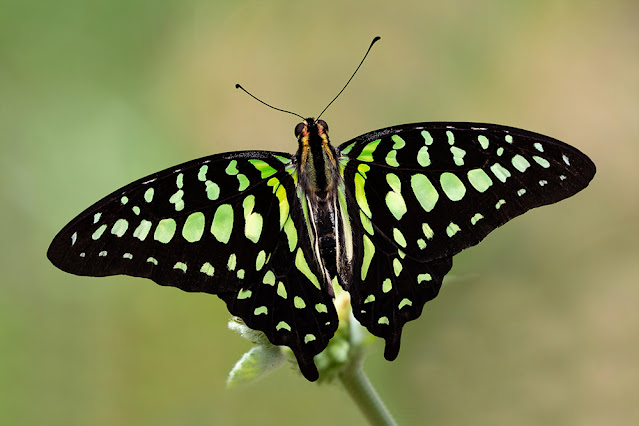
Photo taken at Chiang Dao Nature Sanctuary, Chiang Mai, Thailand ♀ 540m a.s.l.

Graphium agamemnon is a species that is widely distributed throughout most of the region. The sexes look very similar to each other but the female has slightly longer tails. They are usually seen singly or perhaps in pairs but prior to mating both sexes can often be seen circling around the tops of trees, using these as assembly points where courtship takes place. Both sexes mud puddle and visit flowers. The males can be seen regularly mud puddling along the banks of streams but not in large numbers like other members of the Graphium subfamily. When feeding on flowers or puddling, it flutters its wings almost continuously but occasionally stops as it becomes engrossed in its feeding. They have a strong, swift flight, and can sometimes be seen resting or basking on low vegetation.
The species is multivoltine with up to eight broods per annum. Females can lay up to 100 eggs on young leaves of sapling trees, mainly in the family Annonaceae but sometimes on species from other plant families. The larvae are at first a dark browny colour with two broad white strips but change colour to green by the third instar. They are also an unusual shape being larger at the head end and tapering significantly to the tail.
Synonyms and previously used names: Papilio agamemnon, Papilio mynion, Papilio atreus, Papilio aegisthus, Papilio dorylas
Taxonomy: Animalia - Arthropoda - Insecta - Lepidoptera - Papilionidae - Papilioninae - Graphium - agamemnon
Regional subspecies: G.agamemnon agamemnon (Nepal, India, Myanmar, Thailand, Laos, Cambodia, Vitenam, China, Taiwan, Malaysia, Singapore, Indonesia, Philippines). Most of the region is covered by this one subspecies but there are more listed in the islands of Indonesia.
Regional Distribution: India, Nepal, Bhutan, Myanmar, Thailand, Laos, Cambodia, Vietnam, S.China, Taiwan, Malaysia, Singapore, Indonesia, Philippines
 |
Chiang Dao Nature Sanctuary, Chiang Mai, Thailand. 540m a.s.l. |
Habitat: Graphium agamemnon is found in a wide range of open habitats including evergreen forest clearings, grasslands, riverbanks, and urban parks & gardens. Very common at low elevations and regularly seen in gardens and urban areas due to one of its favoured larval foodplants, Monoon longifolium (syn.Polyalthia longifolia), being widely used as an ornamental tree. It has been recorded at elevations up to 1800m a.s.l.
Flight time: all year, depending on location. Wingspan: 65-85mm
Life History: egg 3-5 days instar 1 2-3 days instar 2 3-4 days instar 3 3-4 days instar 4 3-5 days instar 5 4-6 days pupa 12-14 days Total egg-adult 32-41 days. All times are approximate.
Larval Hosts: Anaxagorea luzonensis, Annona glabera, Annona cherimola, Annona glabra, Annona mucosa, Annona muricata, Annona reticulata, Annona squamosa, Artabotrys hexapetalus, Artabotrys siamensis, Artabotrys speciosus, Artabotrys zeylanicus, Cananga odorata, Desmos chinensis, Desmos cochinchinensis, Goniothalamus amuyon, Goniothalamus cardiopetalus, Goniothalamus macranthus, Huberantha cerasoides, Miliusa indica, Miliusa tomentosa, Monoon longifolium, Polyalthia suberosa, Sageraea elliptica, Uvaria concava, Uvaria dulcis, Uvaria micrantha, Uvaria microcarpa, Uvaria narum, Uvaria pierrei, Uvaria rufa, Uvaria siamensis (Annonaceae), Cassia bakeriana, Cassia fistula, Saraca indica (Fabaceae), Magnolia champaca, Magnolia compressa, Magnolia doltsopa, Magnolia figo, Magnolia grandiflora (Magnoliaceae), Cinnamomum verum, Persea americana (Lauraceae), Citrus maxima (Rutaceae), Dioscorea hispida (Dioscoreaceae), Durio zibethinus (Malvaceae), Piper betle (Piperaceae).
Actual host plant used depends upon location and availabilty of plant species.
Adult Food Sources: Nectar - Asystasia gangetica (Acanthaceae), Austroeupatorium inulifolium, Chromolaena odorata, Cosmos caudatus, Tagetes erecta, Tridax procumbens, Zinnia elegans (Asteraceae), Platostoma axillaris, Premna serratifolia, Tectona grandis, Vitex negundo, Vitex trifolia (Lamiaceae), Duranta erecta, Lantana camara (Verbenaceae), Jatropha curcas (Euphorbiaceae), Moringa oleifera (Moringaceae), Ixora coccinea, Mussaenda frondosa, Pentas lanceolata (Rubiaceae), Ziziphus mauritiana (Rhamnaceae), Caesalpinia pulcherrima, Cassia fistula, Phanera championii, Senna siamea (Fabaceae), Antigonon leptopus (Polygonaceae), Bougainvillea spectabilis (Nyctaginaceae), Catharanthus roseus (Apocynaceae), Melochia umbellata, Sida cordifolia (Malvaceae), Leea alata (Vitaceae), Anacardium occidentale (Anacardiaceae), Psidium guajava (Myrtaceae), Zanthoxylum avicennae (Rutaceae), Helixanthera cylindrica (Loranthaceae).
Other - mud puddling; like other Graphium species, G.agamemnon males adopt a filter-feeding technique, sucking up water through their proboscis, pumping it out through the anus, and then re-imbibing it. This enables them to extract dissolved minerals and prevents them from becoming dehydrated in the tropical heat.
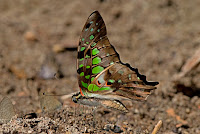 |
| Doi Suthep-Pui National Park, Chiang Mai, Thailand |
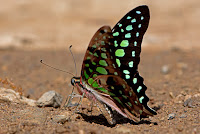 |
| Chiang Dao Nature Sanctuary, Chiang Mai, Thailand |
 |
| Doi Suthep-Pui National Park, Chiang Mai, Thailand |
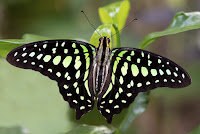 |
| Chiang Dao Nature Sanctuary, Chiang Mai, Thailand ♂ |
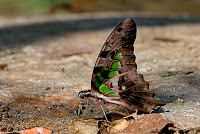 |
| Doi Suthep-Pui National Park, Chiang Mai, Thailand |
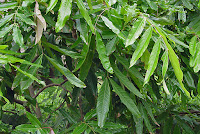 |
| Monoon longifolium, a popular larval host |
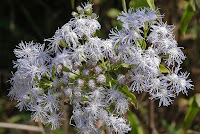 |
| Chromolaena odorata, a nectar source |
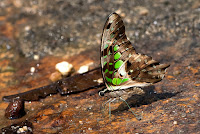 |
| Doi Suthep-Pui National Park, Chiang Mai, Thailand |
 |
| Doi Suthep-Pui National Park, Chiang Mai, Thailand |
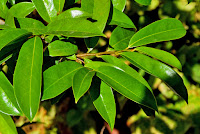 |
| Annona muricata, another larval host |
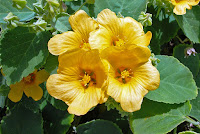 |
| Sida cordifolia, another nectar source |
Links to other pages in this series for species in the same subfamily
Graphium sarpedon
Papilio chaon
Papilio paris
